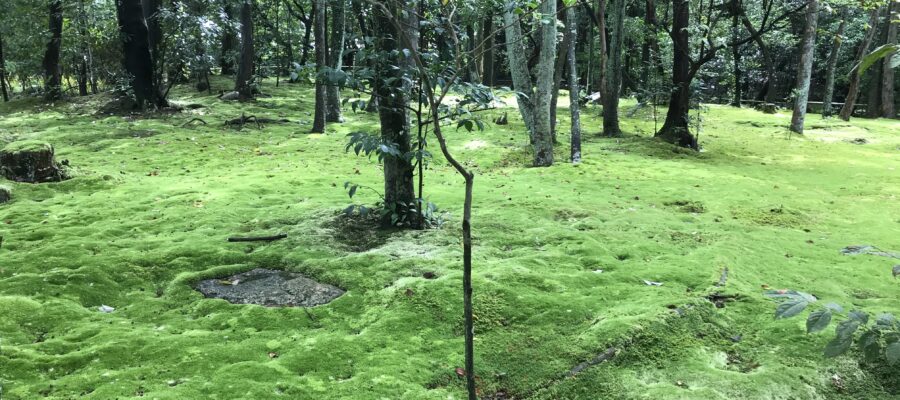宝石のような寺
近鉄の西大寺の駅からバスを少しのると、すぐに秋篠寺のバス停に到着しました。私がこのお寺を知ったのは、五木寛之さんの「百寺巡礼 第一巻 奈良」を読んだ時でした。五木さんは、このお寺の紹介として、「市井にひっそりとある宝石のような寺」と表現されていて、是非その宝石を見たくなりました。
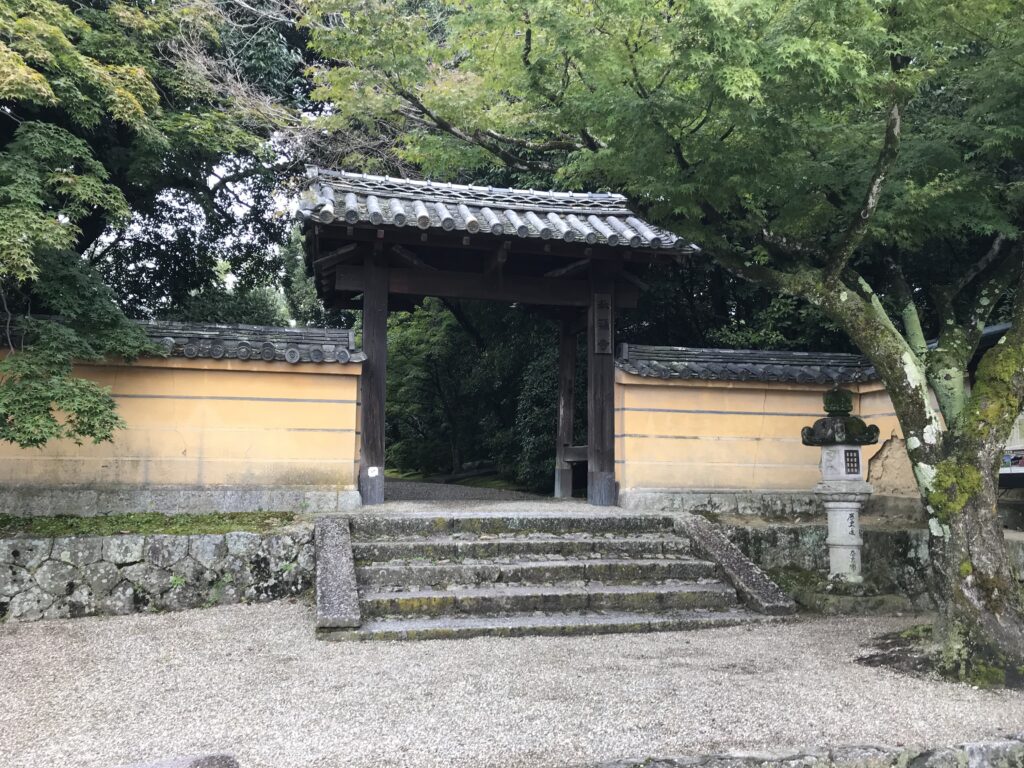
苔の絨毯が見どころ
バスで来たので、バス停に近い東門から入りました。門からして、奈良のお寺の風情があります。砂利道を左右に曲がりながら進むと、噂に聞いていた地面を覆いつくす苔の緑が、より厚く、そしてより瑞々しく、生命観あふれる姿を表してきます。
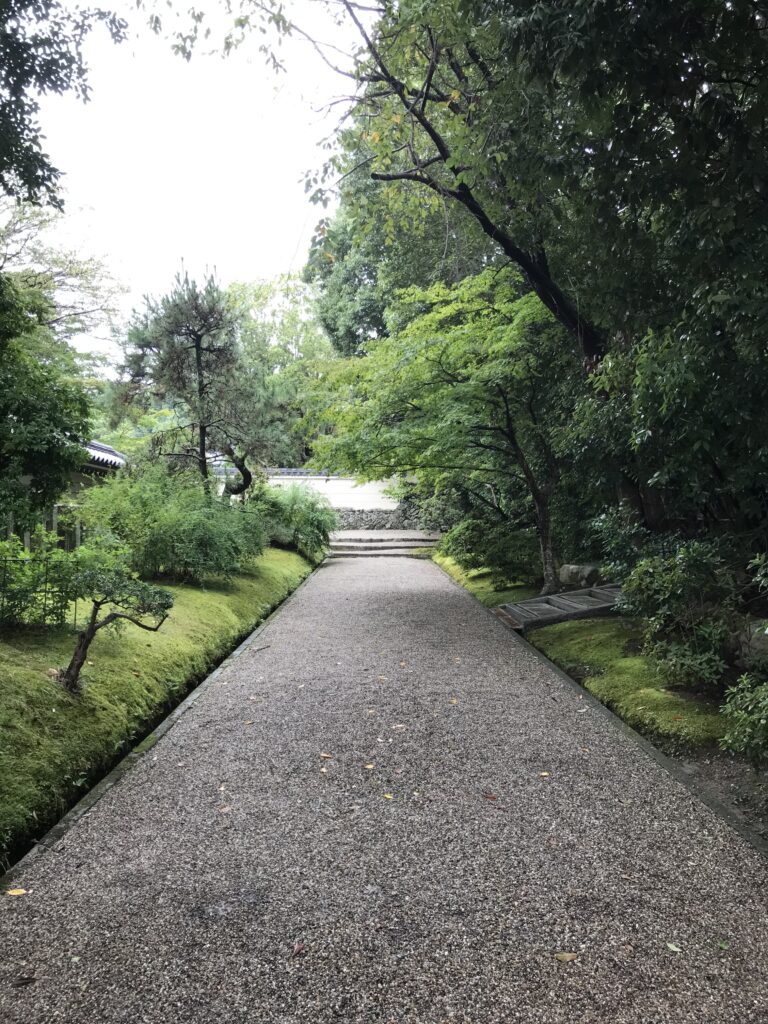
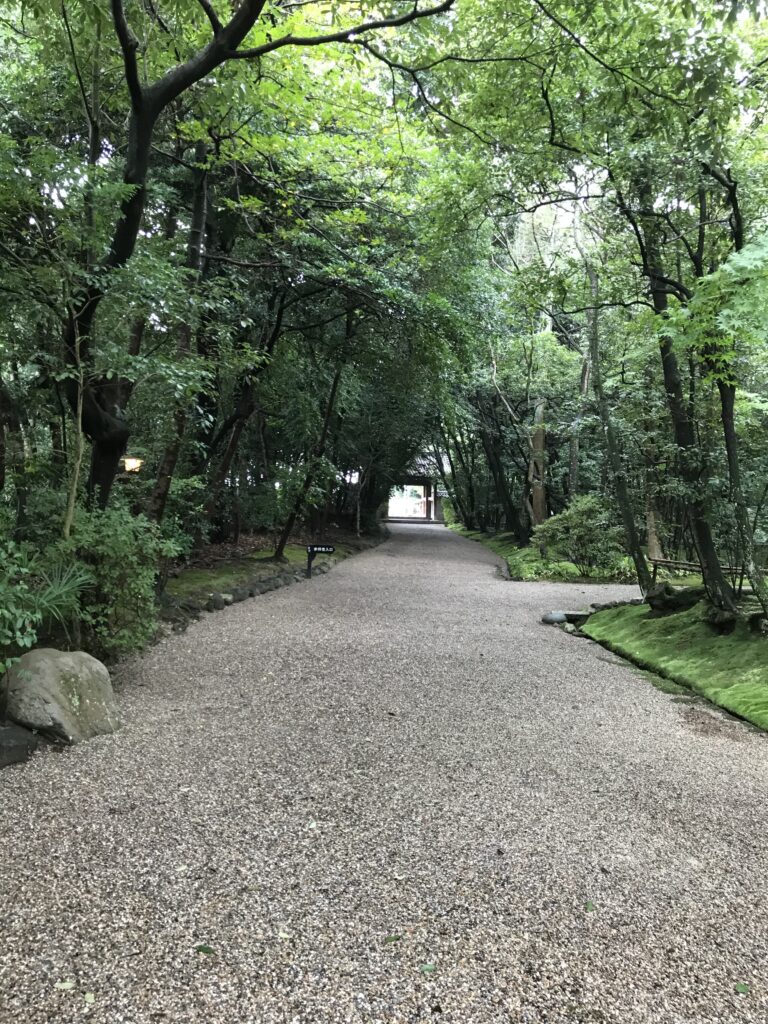
以前、唐招提寺に行った時も、その苔の絨毯の厚みが、力強い生命力を感じさせてくれましたが、このお寺の苔も、物言わずとも、その色、その輝きで、迫ってくるものがありました。受付を済ませ、本堂(国宝)に向かいます。
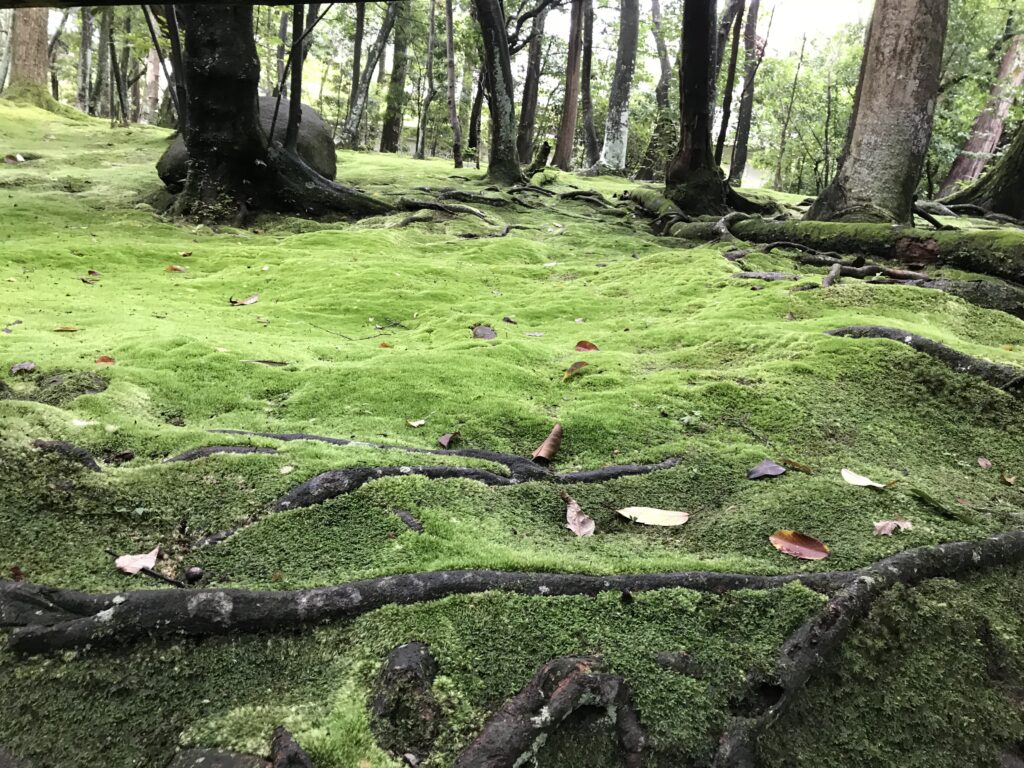
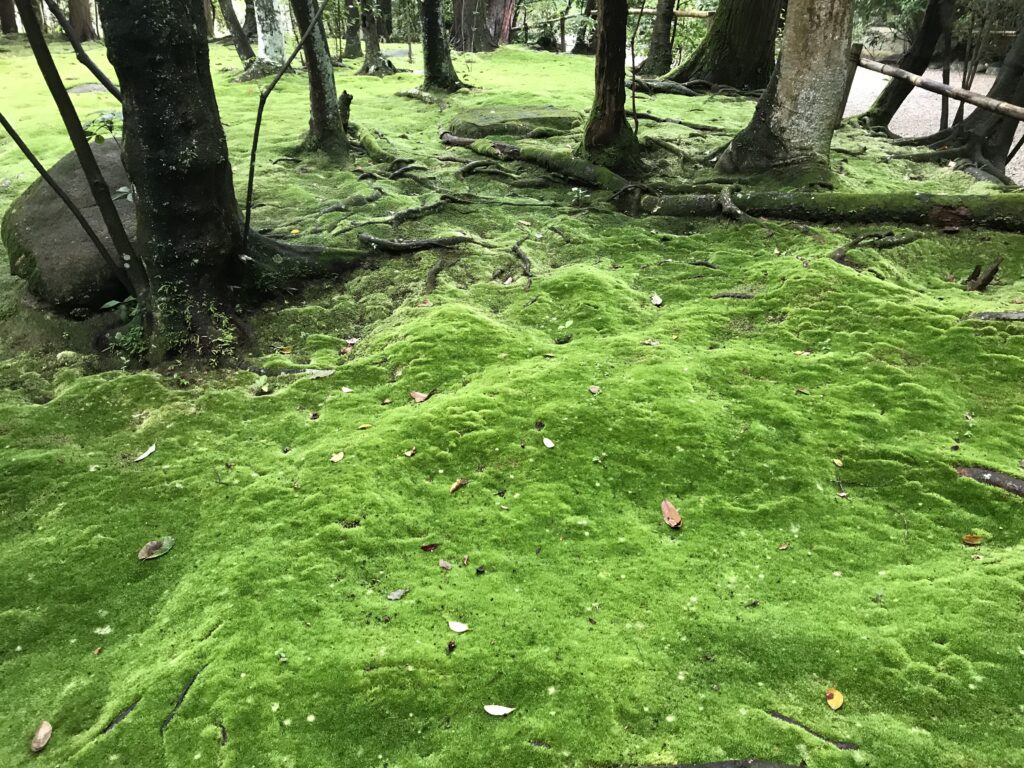
伎芸天の仏像に出会う
見たところ、奈良時代の建物のようですが、鎌倉時代に大修理を受けた建物で、元々は講堂として建立されたそうです。堂内は撮影禁止ですが、ここには五木さんが紹介している、伎芸天の像があります。お寺でいただいた資料によると、「衆生の吉祥と芸能を主宰し、諸伎諸芸の祈願を納受したまう。」とあり、美術家、文芸家、芸能関係の方が多くお参りに来られるようです。
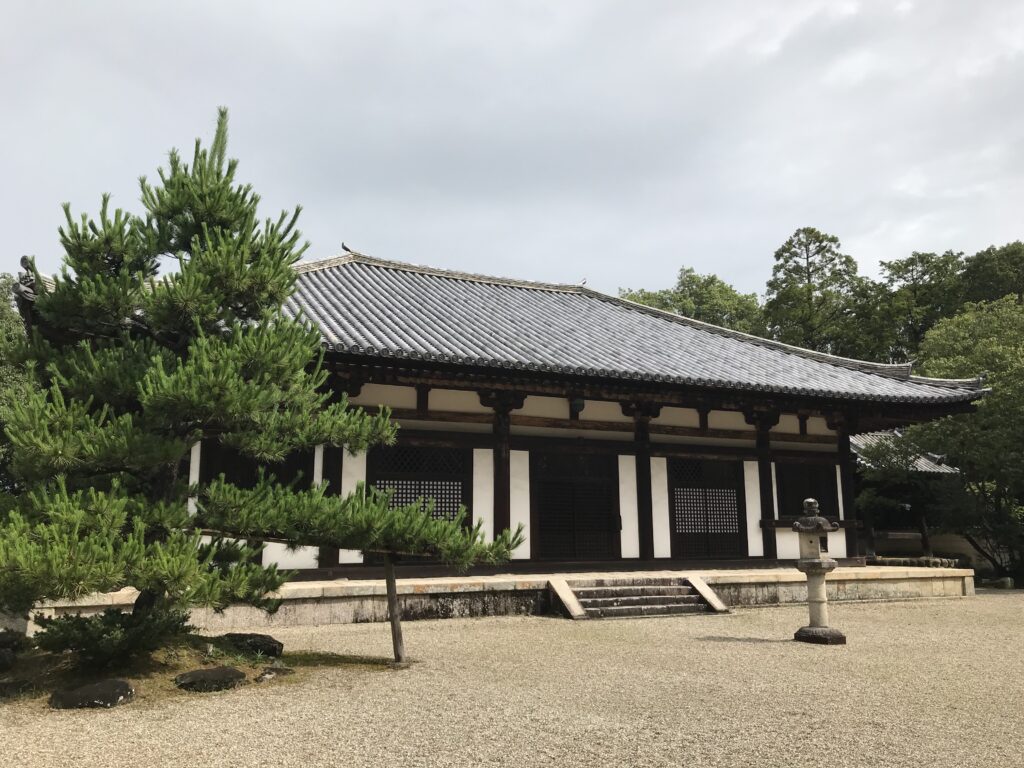
本堂の周りを歩きながら見て回りました。平日の午前中だったため、人では全くありません。落ち着いた雰囲気の中、ゆっくりと仏様にお参りができるお寺です。帰りも苔の絨毯に見送られながら、今度は南大門から出て、徒歩で西大寺駅に戻りました。(完)
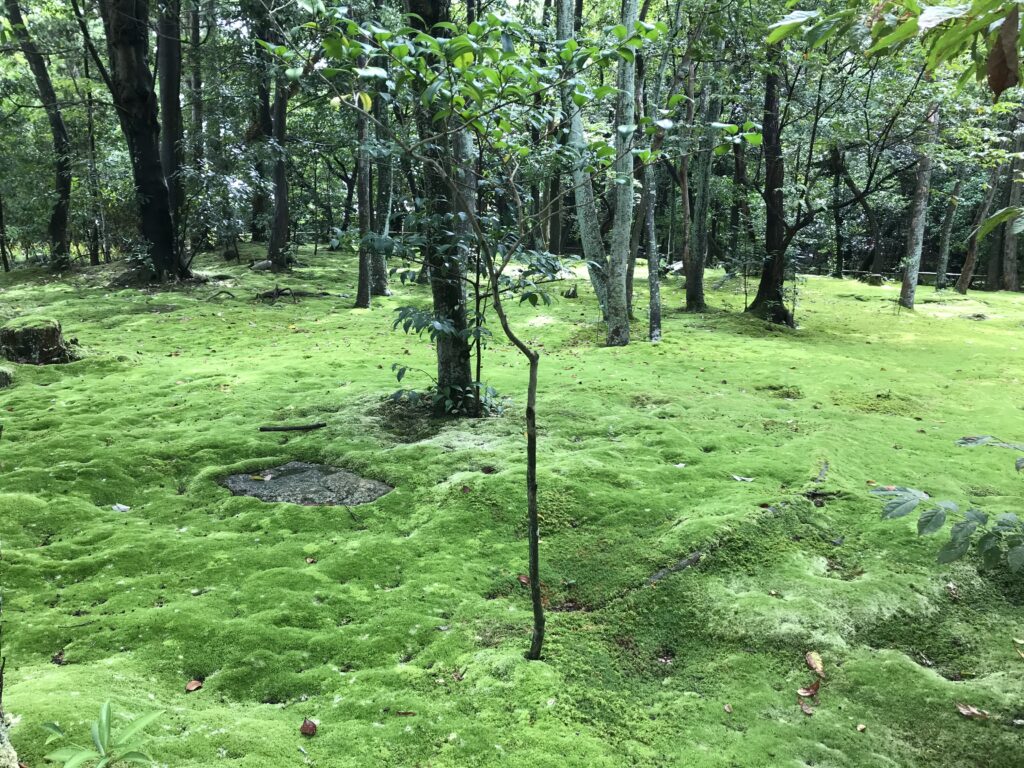
秋篠寺が紹介されている書籍
五木寛之さんの「百寺巡礼 第一巻 奈良」に秋篠寺が紹介されています。
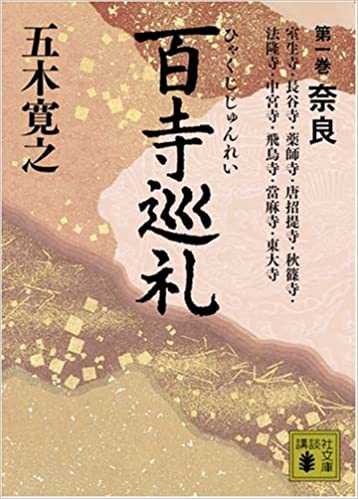
価格:693円
(2021/5/1 18:08時点)
感想(8件)
Akishino Temple
A short bus ride from the Kintetsu Saidaiji station brought me to the Akishinoji bus stop. I first became aware of this temple when I read Hiroyuki Itsuki’s ” Hyakudera Pilgrimage, Volume 1: Nara”. In his introduction to this temple, Mr. Itsuki described it as “a hidden gem of a temple in the city,” and I was eager to see this gem.
Since I came by bus, I entered the temple from the east gate near the bus stop. From the gate, the temple has the atmosphere of a temple in Nara. As I proceeded along the gravel path, winding left and right, the green moss covering the ground, which I had heard so much about, became thicker and more lush, full of life.
When I visited Toshodaiji Temple before, the thickness of the moss carpet gave me a strong sense of vitality, but the moss at this temple, even without saying a word, was also very impressive with its color and brilliance. After completing the reception, I headed for the main hall (a national treasure).
It looks like it was built in the Nara period (710-794), but it underwent major repairs in the Kamakura period (1185-1333) and was originally built as a lecture hall. Photography is not allowed inside the hall, but there is a statue of Gigiten, as described by Mr. Itsuki. According to the materials given to us at the temple, “Gigiten presides over the good fortune of sentient beings and the performing arts, and accepts prayers for all kinds of arts and crafts. It seems that many artists, writers, and people involved in the performing arts come to visit the temple.
I walked around the main hall and took a look around. It was a weekday morning, so there were no people at all. It is a temple where one can slowly visit the Buddha in a calm atmosphere. On the way back from the temple, I was again greeted by a carpet of moss, this time exiting through the Nandaimon gate and returning to Saidaiji Station on foot. (End)
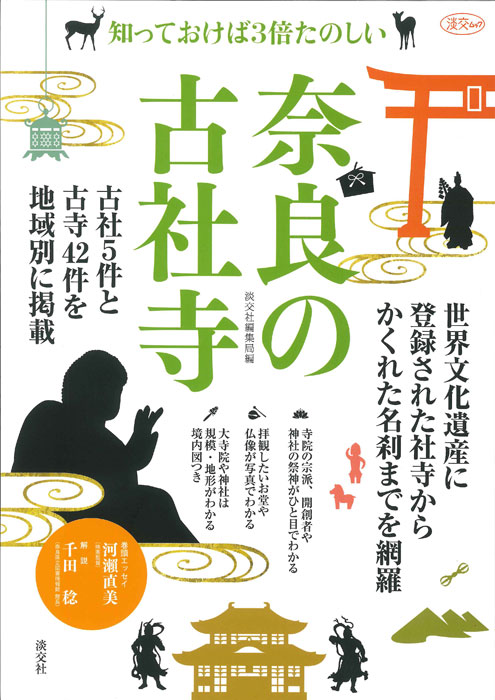
奈良の古社寺 知っておけば3倍たのしい (淡交ムック) [ 淡交社編集局 ]
価格:1,320円
(2023/1/8 00:38時点)
感想(0件)
Temple Akishino
Un court trajet en bus depuis la station Kintetsu Saidaiji m’a amené à l’arrêt Akishinoji. J’ai entendu parler de ce temple pour la première fois en lisant ” Hyakudera Pilgrimage, Volume 1 : Nara ” de Hiroyuki Itsuki. Dans son introduction à ce temple, M. Itsuki le décrit comme ” un joyau caché de la ville “, et j’avais hâte de voir ce joyau.
Comme je suis venu en bus, je suis entré dans le temple par la porte est, près de l’arrêt de bus. Dès la porte, le temple a l’atmosphère d’un temple de Nara. Au fur et à mesure que j’avançais sur le chemin de gravier, serpentant à gauche et à droite, la mousse verte recouvrant le sol, dont j’avais tant entendu parler, devenait plus épaisse et plus luxuriante, pleine de vie.
Lorsque j’ai visité le temple Toshodaiji auparavant, l’épaisseur du tapis de mousse m’a donné un fort sentiment de vitalité, mais la mousse de ce temple, même sans dire un mot, était également très impressionnante par sa couleur et sa brillance. Après avoir terminé la réception, je me suis dirigé vers le hall principal (un trésor national).
Il semble avoir été construit pendant la période Nara (710-794), mais il a subi d’importantes réparations pendant la période Kamakura (1185-1333) et a été construit à l’origine comme une salle de conférence. Il est interdit de photographier à l’intérieur de la salle, mais il y a une statue de Gigiten, comme l’a décrit M. Itsuki. Selon les documents qui nous ont été remis au temple, “Gigiten préside à la bonne fortune des êtres sensibles et des arts du spectacle, et accepte les prières pour toutes sortes d’arts et d’artisanat. Il semble que de nombreux artistes, écrivains et personnes impliquées dans les arts du spectacle viennent visiter le temple.
Je me suis promené dans le hall principal et j’ai jeté un coup d’œil. C’était un matin de semaine, donc il n’y avait pas du tout de monde. C’est un temple où l’on peut visiter lentement le Bouddha dans une atmosphère calme. Sur le chemin du retour du temple, j’ai été de nouveau accueilli par un tapis de mousse, cette fois en sortant par la porte Nandaimon et en retournant à pied à la station Saidaiji. (Fin)
